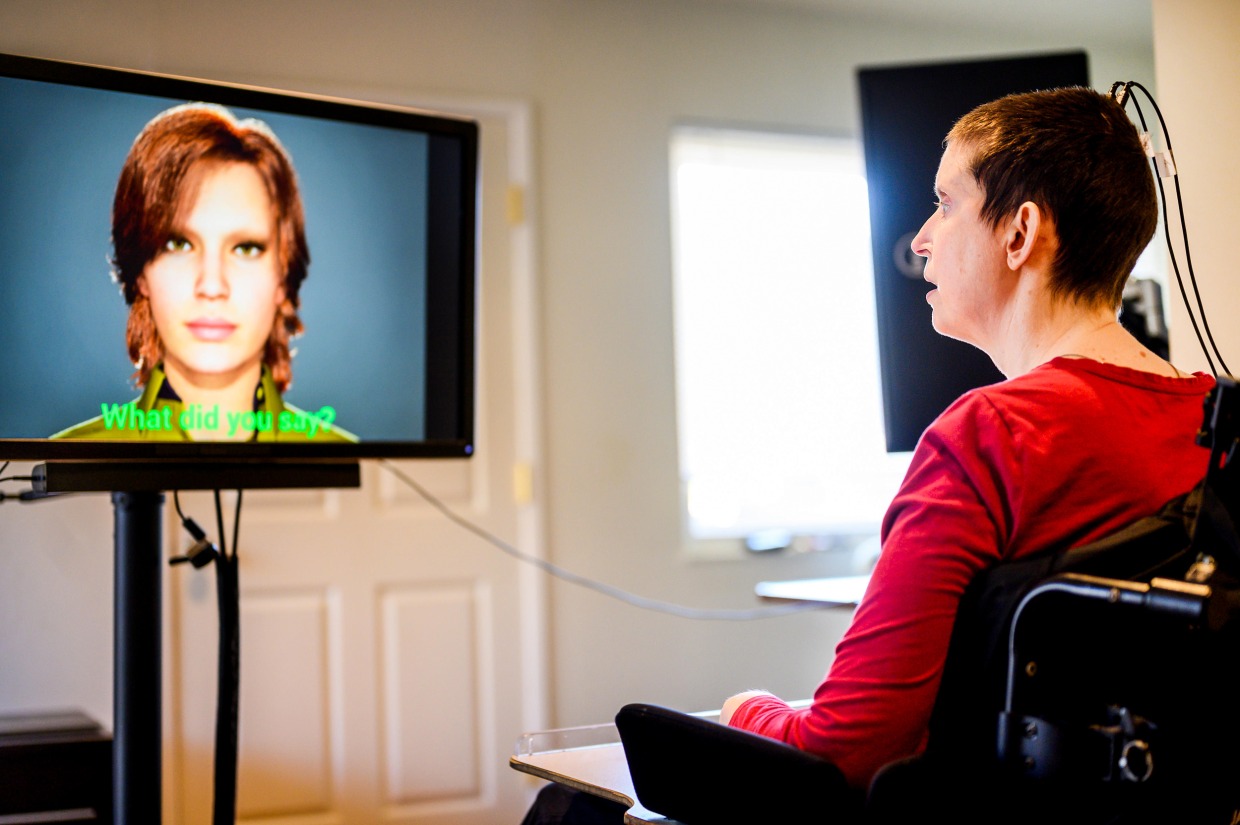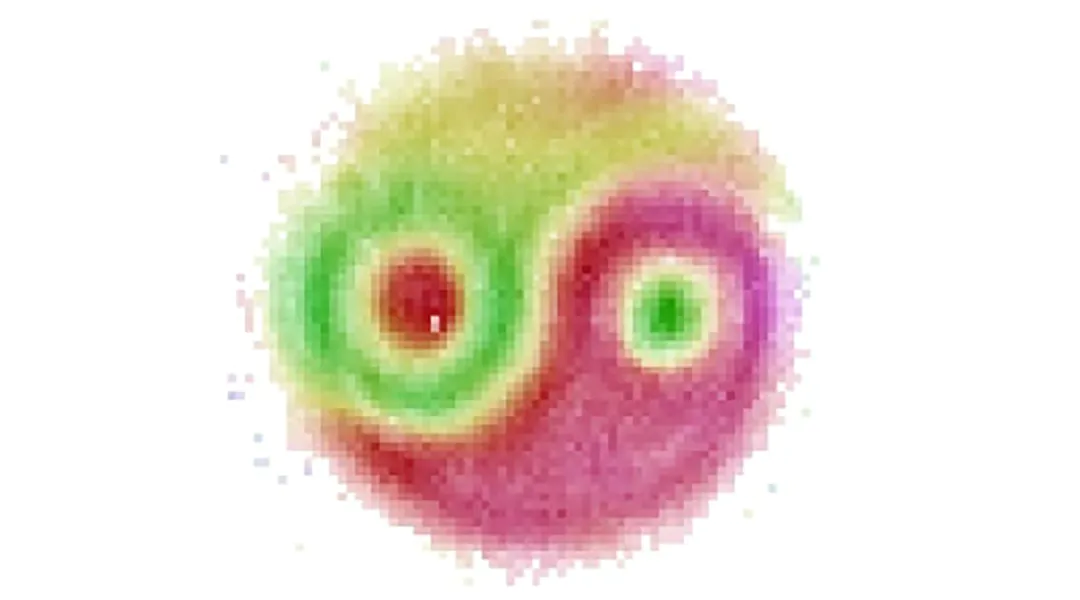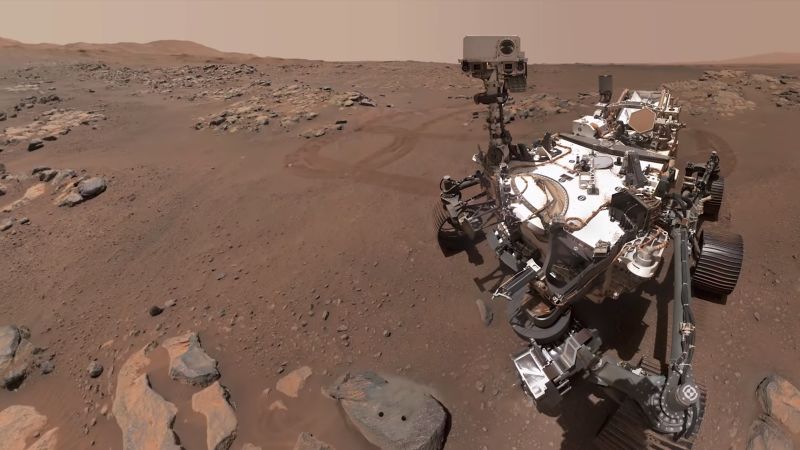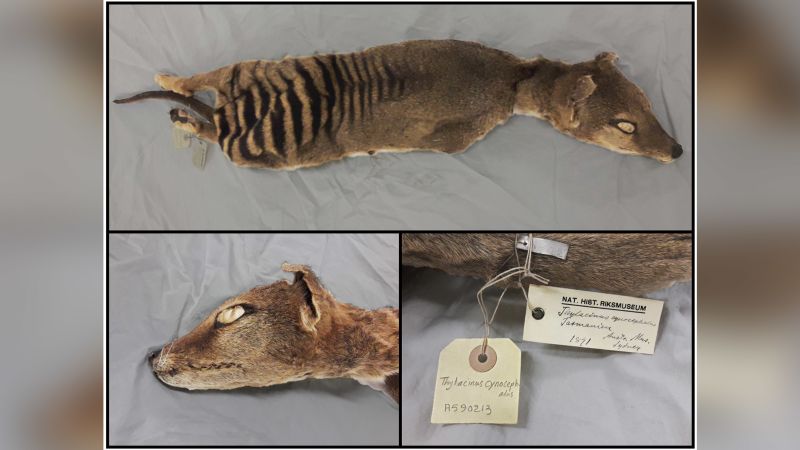We are all connected ... to all life on this planet ...
We are all connected ... right down to our chin ...
We are all connected ... to space ...
We are all connected ... to the stars, more precious than gold ...
We are all connected ... in every grain of dust ...
We are all connected ... to every drop of water ...
We are all connected ... including human life to the balance of climate on this planet ...
We are all connected ... even to the most distant star ...
We are all connected ... to gravity and (if it exists) dark matter ...
We are all connected ... sometimes merging together ...
We are all connected ... to self-organizing molecules coming together ...
We are all connected ... and, like galaxies and molecules, people need to come together ...
We are all connected ... but sometimes need to be separate, individual, a "self" (so, even for a Buddhist, "self" is important) ...
We are all connected ... but some live longer than others ...
We are all connected ... even to artificial organs in little jars ...
We are all connected ... but sometimes we do not wish to share data ...
We are all connected ... but sometimes we fight each other ...
We are all connected ... to AI ... sometimes posing as a "I" ...
We are all connected ... and our actions impact others ...
We are all connected ... with many wanting to limit cravings via medical interventions ...
We are all connected ... with some of us suffering addictions, which prescribed medical treatments might help ...
Gassho, J
stlah
Global Genomes: Scientists Rewrite the Story of Human Genetics
... Called the Human Pangenome Reference Consortium, the multi-institutional effort expands and updates earlier work that started as the Human Genome Project. That original project, with drafts reported in 2001 and 2003, was based on a more limited sampling of human DNA. The goal then was to create an entire sequence of a human genome to use as a reference. It reflected data mostly from one person, with slight amounts of genetic information from about 20 others. ... In contrast, the human pangenome reference contains nearly full genomic data from 47 people, representing different populations globally. This accounts for 94 human genomes, since each person carries two copies, one from each parent. ... “It has the potential not only to improve discovery of genetic diseases but also transform our understanding of the genetic diversity of our species.” ... Eventually a cohort of more than 350 participants will enable researchers to capture the most common genetic variants, including ones that have been missed previously because they map to complex regions. ...
... The scientists created a map of hotpots that were prime locations for donating or receiving genetic material. ...
... the scientists plan to push towards a telomere-to-telomere or tip-to-tip sequencing of chromosomes to get a more complete picture of how people differ. ...
https://scitechdaily.com/global-geno...uman-genetics/
... Called the Human Pangenome Reference Consortium, the multi-institutional effort expands and updates earlier work that started as the Human Genome Project. That original project, with drafts reported in 2001 and 2003, was based on a more limited sampling of human DNA. The goal then was to create an entire sequence of a human genome to use as a reference. It reflected data mostly from one person, with slight amounts of genetic information from about 20 others. ... In contrast, the human pangenome reference contains nearly full genomic data from 47 people, representing different populations globally. This accounts for 94 human genomes, since each person carries two copies, one from each parent. ... “It has the potential not only to improve discovery of genetic diseases but also transform our understanding of the genetic diversity of our species.” ... Eventually a cohort of more than 350 participants will enable researchers to capture the most common genetic variants, including ones that have been missed previously because they map to complex regions. ...
... The scientists created a map of hotpots that were prime locations for donating or receiving genetic material. ...
... the scientists plan to push towards a telomere-to-telomere or tip-to-tip sequencing of chromosomes to get a more complete picture of how people differ. ...
https://scitechdaily.com/global-geno...uman-genetics/
300,000-year-old skull found in China unlike any early human seen before
An ancient skull dating back 300,000 years is unlike any other premodern human fossil ever found, potentially pointing to a new branch in the human family tree, according to new research. An international team of researchers from China, Spain and the United Kingdom unearthed the skull — specifically the mandible, or lower jaw — in the Hualongdong region of eastern China in 2015, along with 15 other specimens, all thought to originate from the late Middle Pleistocene period. Scientists believe the late Middle Pleistocene, which started around 300,000 years ago, was a pivotal period for the evolution of hominins — species that are regarded as human or closely related — including modern humans.
... By comparing the HLD 6 mandible to those of Pleistocene hominins and modern humans, the researchers found it has features of both. It is similarly shaped to the mandible of Homo sapiens, our modern human species that evolved from Homo erectus. But it also shares a characteristic of a different branch that evolved from Homo erectus, the Denisovans. Like the Denisovans, HLD 6 does not appear to have a chin. ...
... The researchers theorize that HLD 6 must belong to a classification that hasn’t yet been given a name, and that modern human characteristics could have been present as early as 300,000 years ago — before the emergence of modern humans in east Asia. ...

https://us.cnn.com/2023/08/10/asia/a...scn/index.html
An ancient skull dating back 300,000 years is unlike any other premodern human fossil ever found, potentially pointing to a new branch in the human family tree, according to new research. An international team of researchers from China, Spain and the United Kingdom unearthed the skull — specifically the mandible, or lower jaw — in the Hualongdong region of eastern China in 2015, along with 15 other specimens, all thought to originate from the late Middle Pleistocene period. Scientists believe the late Middle Pleistocene, which started around 300,000 years ago, was a pivotal period for the evolution of hominins — species that are regarded as human or closely related — including modern humans.
... By comparing the HLD 6 mandible to those of Pleistocene hominins and modern humans, the researchers found it has features of both. It is similarly shaped to the mandible of Homo sapiens, our modern human species that evolved from Homo erectus. But it also shares a characteristic of a different branch that evolved from Homo erectus, the Denisovans. Like the Denisovans, HLD 6 does not appear to have a chin. ...
... The researchers theorize that HLD 6 must belong to a classification that hasn’t yet been given a name, and that modern human characteristics could have been present as early as 300,000 years ago — before the emergence of modern humans in east Asia. ...

https://us.cnn.com/2023/08/10/asia/a...scn/index.html
Arrowhead made from meteorite 3,000 years ago found near lake in Europe
A Bronze Age arrowhead unearthed in Switzerland was made from a meteorite, a new study has found.
Dating back to between 900 and 800 BC, the 39-millimeter-long (1.5-inch-long) arrowhead was found on a pile-dwelling site in Mörigen on Lake Biel, Switzerland, during excavations in the 19th century, according to the study conducted by a team of researchers at the Natural History Museum of Bern.
The nearly 3,000-year-old artifact was created with iron from a meteorite that landed in Estonia, the study noted. This indicates that meteoritic iron was traded in Europe by 800 BC or earlier, the researchers said, adding how unusual it is to find meteoritic iron used so early in history.
https://us.cnn.com/style/article/arr...scn/index.html
A Bronze Age arrowhead unearthed in Switzerland was made from a meteorite, a new study has found.
Dating back to between 900 and 800 BC, the 39-millimeter-long (1.5-inch-long) arrowhead was found on a pile-dwelling site in Mörigen on Lake Biel, Switzerland, during excavations in the 19th century, according to the study conducted by a team of researchers at the Natural History Museum of Bern.
The nearly 3,000-year-old artifact was created with iron from a meteorite that landed in Estonia, the study noted. This indicates that meteoritic iron was traded in Europe by 800 BC or earlier, the researchers said, adding how unusual it is to find meteoritic iron used so early in history.
[ATTACH=CONFIG]8636[/ATTACH]
https://us.cnn.com/style/article/arr...scn/index.html
Cosmic Gold Factory: Single Kilonova Produced 1,000x the Mass of the Earth in Very Heavy Elements
An unusually powerful gamma-ray burst (GRB 211211A), detected from a nearby galaxy, has been linked to a neutron star merger by an international team of scientists. This burst, notable for its excess of infrared light, was shown to originate from a kilonova, an event thought to occur when neutron stars collide. ... This gamma-ray burst, identified as GRB 211211A, persisted for approximately a minute – a relatively lengthy explosion, which would usually signal the collapse of a massive star into a supernova. ... In a recent study, published in the journal Nature, an international team of scientists showed that the infrared light detected in the burst came from a kilonova. This is a rare event, thought to be generated as neutron stars, or a neutron star and a black hole collide, producing heavy elements such as gold and platinum. ... “We found that this one event produced about 1,000 times the mass of the Earth in very heavy elements. This supports the idea that these kilonovae are the main factories of gold in the Universe,” he said.
https://scitechdaily.com/cosmic-gold...eavy-elements/
An unusually powerful gamma-ray burst (GRB 211211A), detected from a nearby galaxy, has been linked to a neutron star merger by an international team of scientists. This burst, notable for its excess of infrared light, was shown to originate from a kilonova, an event thought to occur when neutron stars collide. ... This gamma-ray burst, identified as GRB 211211A, persisted for approximately a minute – a relatively lengthy explosion, which would usually signal the collapse of a massive star into a supernova. ... In a recent study, published in the journal Nature, an international team of scientists showed that the infrared light detected in the burst came from a kilonova. This is a rare event, thought to be generated as neutron stars, or a neutron star and a black hole collide, producing heavy elements such as gold and platinum. ... “We found that this one event produced about 1,000 times the mass of the Earth in very heavy elements. This supports the idea that these kilonovae are the main factories of gold in the Universe,” he said.
https://scitechdaily.com/cosmic-gold...eavy-elements/
The Life and Times of Dust: A Glimpse Into the Early Universe
... Captured by the Near-InfraRed Camera (NIRCam) and Mid-InfraRed Instrument (MIRI) mounted on the James Webb Space Telescope, this image shows the irregular galaxy NGC 6822. ... Located approximately 1.5 million light-years away, NGC 6822 is the nearest galactic neighbor to the Milky Way that is not a satellite. ... It exhibits very low metallicity, meaning it has minimal proportions of elements other than hydrogen and helium. Metallicity is a fundamental concept in astronomy since elements apart from hydrogen and helium are predominantly produced by stars over their lifetimes. In the early universe, before the first generation of stars had been born, lived, and died, everything was of low metallicity. Hence, modern objects with low metallicity, like NGC 6822, are valuable in understanding how processes such as stellar evolution and the life cycle of interstellar dust likely occurred in the early Universe.

https://scitechdaily.com/the-life-an...arly-universe/
... Captured by the Near-InfraRed Camera (NIRCam) and Mid-InfraRed Instrument (MIRI) mounted on the James Webb Space Telescope, this image shows the irregular galaxy NGC 6822. ... Located approximately 1.5 million light-years away, NGC 6822 is the nearest galactic neighbor to the Milky Way that is not a satellite. ... It exhibits very low metallicity, meaning it has minimal proportions of elements other than hydrogen and helium. Metallicity is a fundamental concept in astronomy since elements apart from hydrogen and helium are predominantly produced by stars over their lifetimes. In the early universe, before the first generation of stars had been born, lived, and died, everything was of low metallicity. Hence, modern objects with low metallicity, like NGC 6822, are valuable in understanding how processes such as stellar evolution and the life cycle of interstellar dust likely occurred in the early Universe.

https://scitechdaily.com/the-life-an...arly-universe/
Salted Secrets: Drops of Seawater Contain Traces of an Ancient World
Using advanced equipment, researchers studied sea salt to uncover changes in seawater chemistry and its relation to geological processes and climate over the last 150 million years. Their findings linked tectonic plate movements to shifts in ocean and atmospheric compositions, influencing global climate and marine biology. ... They looked at sea salt (halite) formed at various times over the past 150 million years in geographically diverse sedimentary basins in the United States, Europe, Asia, and Africa. Within the salt samples were tiny pockets containing a bit of ancient seawater. ... The slowdown in plate activity over the past 150 million years led to less lithium being added to the ocean and reduced amounts of carbon dioxide released into the atmosphere, which ultimately led to global cooling and the present ice age. Turning back the clock 150 million years, the earth was a warmer place with more carbon dioxide in the atmosphere and more lithium in the sea. ...
https://scitechdaily.com/salted-secr...pand_article=1
Using advanced equipment, researchers studied sea salt to uncover changes in seawater chemistry and its relation to geological processes and climate over the last 150 million years. Their findings linked tectonic plate movements to shifts in ocean and atmospheric compositions, influencing global climate and marine biology. ... They looked at sea salt (halite) formed at various times over the past 150 million years in geographically diverse sedimentary basins in the United States, Europe, Asia, and Africa. Within the salt samples were tiny pockets containing a bit of ancient seawater. ... The slowdown in plate activity over the past 150 million years led to less lithium being added to the ocean and reduced amounts of carbon dioxide released into the atmosphere, which ultimately led to global cooling and the present ice age. Turning back the clock 150 million years, the earth was a warmer place with more carbon dioxide in the atmosphere and more lithium in the sea. ...
https://scitechdaily.com/salted-secr...pand_article=1
Europe’s Ancient Freeze: New Study Reveals Ancient Cooling Wiped Out Early Humans
Paleoclimate evidence indicates that roughly 1.1 million years ago, there was a significant drop in temperature in southern Europe. This climate shift likely led to the disappearance of early human populations in the region, according to a new study led by UCL researchers.
The research, which was published in the journal Science, unveiled that previously unrecognized extreme glacial conditions took place about 1.1 million years ago. This intense cold spell made the European climate inhospitable for early humans, resulting in the continent being devoid of human inhabitants.
https://scitechdaily.com/europes-anc...-early-humans/
Paleoclimate evidence indicates that roughly 1.1 million years ago, there was a significant drop in temperature in southern Europe. This climate shift likely led to the disappearance of early human populations in the region, according to a new study led by UCL researchers.
The research, which was published in the journal Science, unveiled that previously unrecognized extreme glacial conditions took place about 1.1 million years ago. This intense cold spell made the European climate inhospitable for early humans, resulting in the continent being devoid of human inhabitants.
https://scitechdaily.com/europes-anc...-early-humans/
Webb telescope captures image of most distant star ever seen
Astronomers have used the James Webb Space Telescope to observe Earendel, the most distant star ever detected.
Earendel is so distant that the starlight glimpsed by the Webb telescope was emitted within the first billion years of the universe. The universe is estimated to be about 13.8 billion years old. Previous estimates suggest the star is 12.9 billion light-years away from Earth, but given the expansion of the universe and how long the light has traveled to reach us, astronomers believe Earendel is currently 28 billion light-years away.

https://us.cnn.com/2023/08/11/world/...scn/index.html
Astronomers have used the James Webb Space Telescope to observe Earendel, the most distant star ever detected.
Earendel is so distant that the starlight glimpsed by the Webb telescope was emitted within the first billion years of the universe. The universe is estimated to be about 13.8 billion years old. Previous estimates suggest the star is 12.9 billion light-years away from Earth, but given the expansion of the universe and how long the light has traveled to reach us, astronomers believe Earendel is currently 28 billion light-years away.

https://us.cnn.com/2023/08/11/world/...scn/index.html
Conclusive Evidence for Modified Gravity: Collapse of Newton’s and Einstein’s Theories in Low Acceleration
A study on the orbital motions of wide binaries has uncovered evidence that standard gravity breaks down at low accelerations. This discovery aligns with a modified theory called MOND and challenges current concepts of dark matter. The implications for astrophysics, physics, and cosmology are profound, and the results have been acknowledged as a significant discovery by experts in the field ...
... The implications of wide binary dynamics are profound for astrophysics, theoretical physics, and cosmology. Anomalies in Mercury’s orbits observed in the nineteenth century eventually led to Einstein’s general relativity. Now anomalies in wide binaries demand a new theory extending general relativity to the low acceleration MOND limit.
Despite all the successes of Newton’s gravity, general relativity is needed for relativistic gravitational phenomena such as black holes and gravitational waves. Likewise, despite all the successes of general relativity, a new theory is needed for MOND phenomena in the weak acceleration limit. The weak-acceleration catastrophe of gravity may have some similarity to the ultraviolet catastrophe of classical electrodynamics that led to quantum physics. ... Wide binary anomalies are disastrous for standard gravity and cosmology that rely on dark matter and dark energy concepts. Since gravity follows MOND, a large amount of dark matter in galaxies (and even in the universe) is no longer needed. This is a significant surprise to Chae who, like typical scientists, “believed in” dark matter until a few years ago.
A study on the orbital motions of wide binaries has uncovered evidence that standard gravity breaks down at low accelerations. This discovery aligns with a modified theory called MOND and challenges current concepts of dark matter. The implications for astrophysics, physics, and cosmology are profound, and the results have been acknowledged as a significant discovery by experts in the field ...
... The implications of wide binary dynamics are profound for astrophysics, theoretical physics, and cosmology. Anomalies in Mercury’s orbits observed in the nineteenth century eventually led to Einstein’s general relativity. Now anomalies in wide binaries demand a new theory extending general relativity to the low acceleration MOND limit.
Despite all the successes of Newton’s gravity, general relativity is needed for relativistic gravitational phenomena such as black holes and gravitational waves. Likewise, despite all the successes of general relativity, a new theory is needed for MOND phenomena in the weak acceleration limit. The weak-acceleration catastrophe of gravity may have some similarity to the ultraviolet catastrophe of classical electrodynamics that led to quantum physics. ... Wide binary anomalies are disastrous for standard gravity and cosmology that rely on dark matter and dark energy concepts. Since gravity follows MOND, a large amount of dark matter in galaxies (and even in the universe) is no longer needed. This is a significant surprise to Chae who, like typical scientists, “believed in” dark matter until a few years ago.

Cosmic Tug of War: ... Camera Captures Galaxies in a Prelude to Merger
.. This breathtaking image features the massive barred spiral galaxy NGC 1532, also known as Haley’s Coronet, located about 55 million light-years away in the direction of the southern constellation Eridanus (the river). Its sweeping spiral arms are seen edge-on from Earth, with the nearer arm dipping downward and the receding arm lurching upward as it tugs upon its smaller, dwarf companion galaxy NGC 1531. These gravitationally bound galaxies will eventually become one, as NGC 1532 completely consumes its smaller companion. ...

[ATTACH=CONFIG]8637[/ATTACH]
.. This breathtaking image features the massive barred spiral galaxy NGC 1532, also known as Haley’s Coronet, located about 55 million light-years away in the direction of the southern constellation Eridanus (the river). Its sweeping spiral arms are seen edge-on from Earth, with the nearer arm dipping downward and the receding arm lurching upward as it tugs upon its smaller, dwarf companion galaxy NGC 1531. These gravitationally bound galaxies will eventually become one, as NGC 1532 completely consumes its smaller companion. ...
[ATTACH=CONFIG]8637[/ATTACH]
Scientists have developed a model that explains how molecules can quickly self-organize into life-like structures, challenging traditional views on the origin of life.
One potential hypothesis for the emergence of life involves the self-assembling of interrelating molecules into structures similar to cellular droplets. These specific groups of molecules could establish the earliest self-replicating metabolic cycles, a feature universally present in biological systems and consistent across all life forms. According to this paradigm, the first biomolecules would need to cluster together through slow and overall inefficient processes.
Such slow cluster formation seems incompatible with how quickly life has appeared. Scientists from the department of Living Matter Physics from MPI-DS have now proposed an alternative model that explains such cluster formation and thus the fast onset of the chemical reactions required to form life. ... the model showed the formation of catalytic clusters including various molecular species. Furthermore, the growth of clusters happens exponentially fast. Molecules hence can assemble very quickly and in large numbers into dynamic structures.
“In addition, the number of molecule species which participate in the metabolic cycle plays a key role in the structure of the formed clusters,” Ramin Golestanian, director at MPI-DS, summarizes: “Our model leads to a plethora of complex scenarios for self-organization and makes specific predictions about functional advantages that arise for odd or even number of participating species. It is remarkable that non-reciprocal interactions as required for our newly proposed scenario are generically present in all metabolic cycles.”

A new model describes the self-organization of catalysts involved in metabolic cycles. Different species of catalysts (represented by different colors) form clusters and can chase each other.
https://scitechdaily.com/exploring-t...rnative-model/
One potential hypothesis for the emergence of life involves the self-assembling of interrelating molecules into structures similar to cellular droplets. These specific groups of molecules could establish the earliest self-replicating metabolic cycles, a feature universally present in biological systems and consistent across all life forms. According to this paradigm, the first biomolecules would need to cluster together through slow and overall inefficient processes.
Such slow cluster formation seems incompatible with how quickly life has appeared. Scientists from the department of Living Matter Physics from MPI-DS have now proposed an alternative model that explains such cluster formation and thus the fast onset of the chemical reactions required to form life. ... the model showed the formation of catalytic clusters including various molecular species. Furthermore, the growth of clusters happens exponentially fast. Molecules hence can assemble very quickly and in large numbers into dynamic structures.
“In addition, the number of molecule species which participate in the metabolic cycle plays a key role in the structure of the formed clusters,” Ramin Golestanian, director at MPI-DS, summarizes: “Our model leads to a plethora of complex scenarios for self-organization and makes specific predictions about functional advantages that arise for odd or even number of participating species. It is remarkable that non-reciprocal interactions as required for our newly proposed scenario are generically present in all metabolic cycles.”

A new model describes the self-organization of catalysts involved in metabolic cycles. Different species of catalysts (represented by different colors) form clusters and can chase each other.
https://scitechdaily.com/exploring-t...rnative-model/
Even Zoom is making its staff return to the office
Zoom, the company that powered the remote work revolution during the pandemic, is telling its employees to come back to the office.
In a statement, Zoom said it’s now enforcing a “structured hybrid approach,” meaning that employees who live near an office “need to be onsite two days a week” because it’s “most effective” for the video-conferencing service.
“As a company, we are in a better position to use our own technologies, continue to innovate, and support our global customers. We’ll continue to leverage the entire Zoom platform to keep our employees and dispersed teams connected and working efficiently,” the company said.
Putting aside the irony, Zoom isn’t excluded from the return to office trend that’s sweeping tech companies. In recent months, Google, Amazon and Salesforce have enacted similar policies, ending a Covid-era approach that gave employees more freedom to work from home. However, businesses have faced some pushback from employees after workers grew accustomed to greater flexibility.
https://us.cnn.com/2023/08/07/busine...ice/index.html
Zoom, the company that powered the remote work revolution during the pandemic, is telling its employees to come back to the office.
In a statement, Zoom said it’s now enforcing a “structured hybrid approach,” meaning that employees who live near an office “need to be onsite two days a week” because it’s “most effective” for the video-conferencing service.
“As a company, we are in a better position to use our own technologies, continue to innovate, and support our global customers. We’ll continue to leverage the entire Zoom platform to keep our employees and dispersed teams connected and working efficiently,” the company said.
Putting aside the irony, Zoom isn’t excluded from the return to office trend that’s sweeping tech companies. In recent months, Google, Amazon and Salesforce have enacted similar policies, ending a Covid-era approach that gave employees more freedom to work from home. However, businesses have faced some pushback from employees after workers grew accustomed to greater flexibility.
https://us.cnn.com/2023/08/07/busine...ice/index.html
Scientists Discover Entirely New and Unexpected Killer of Immune Cells Lacking “Self”
Researchers from Kobe University have identified an entirely new and unexpected mechanism through which the immune system eliminates cells lacking molecules that identify them as part of the self in mice. ... The immune system comprises many types of cells that work together to fight off diseases. Two important types are dendritic cells and T cells. Dendritic cells are located in strategic positions throughout the body including the gut and skin, as well as in the lymph nodes, sample their environment and present small components derived from these samples on their surface. T cells check these samples and if they recognize them as foreign (or “non-self”), they will initiate an immune response, otherwise, they will move on. The ability to distinguish self from non-self is therefore a key characteristic of the immune system and T cells undergo very selective training, by dendritic cells, to make sure they can make that distinction.
The cells in our body display several molecules on their surface that identify them as “self” to immune cells. One of these self-identifying molecules is CD47. It was known that if T cells lack CD47, they would be efficiently eliminated by other immune cells. ...
https://scitechdaily.com/inside-job-...-lacking-self/
Researchers from Kobe University have identified an entirely new and unexpected mechanism through which the immune system eliminates cells lacking molecules that identify them as part of the self in mice. ... The immune system comprises many types of cells that work together to fight off diseases. Two important types are dendritic cells and T cells. Dendritic cells are located in strategic positions throughout the body including the gut and skin, as well as in the lymph nodes, sample their environment and present small components derived from these samples on their surface. T cells check these samples and if they recognize them as foreign (or “non-self”), they will initiate an immune response, otherwise, they will move on. The ability to distinguish self from non-self is therefore a key characteristic of the immune system and T cells undergo very selective training, by dendritic cells, to make sure they can make that distinction.
The cells in our body display several molecules on their surface that identify them as “self” to immune cells. One of these self-identifying molecules is CD47. It was known that if T cells lack CD47, they would be efficiently eliminated by other immune cells. ...
https://scitechdaily.com/inside-job-...-lacking-self/
UCLA scientists lead groundbreaking studies on mammalian aging and life span.
Researchers from the UCLA David Geffen School of Medicine and UCLA Health led an international research team that published two articles detailing changes in DNA – changes that researchers found are shared by humans and other mammals throughout history and are associated with life span and numerous other traits.
“We’ve discovered that the life spans of mammals are closely associated with chemical modifications of the DNA molecule, specifically known as epigenetics, or more accurately, methylation. In essence, mammals with longer life spans exhibit more pronounced DNA methylation landscapes, whereas those of shorter-lived species have more subdued, flatter methylation patterns,” said the senior author of both articles, Steve Horvath, Ph.D., ScD, an expert on the aging process and a professor in human genetics and biostatistics at UCLA at the time the studies were conducted.
https://scitechdaily.com/decoding-li...pand_article=1
Researchers from the UCLA David Geffen School of Medicine and UCLA Health led an international research team that published two articles detailing changes in DNA – changes that researchers found are shared by humans and other mammals throughout history and are associated with life span and numerous other traits.
“We’ve discovered that the life spans of mammals are closely associated with chemical modifications of the DNA molecule, specifically known as epigenetics, or more accurately, methylation. In essence, mammals with longer life spans exhibit more pronounced DNA methylation landscapes, whereas those of shorter-lived species have more subdued, flatter methylation patterns,” said the senior author of both articles, Steve Horvath, Ph.D., ScD, an expert on the aging process and a professor in human genetics and biostatistics at UCLA at the time the studies were conducted.
https://scitechdaily.com/decoding-li...pand_article=1
Japanese Scientists Construct Complex 3D Organoids With Ingenious Device
Scientists in Japan have innovatively used hydrogels in cube-like structures to create complex 3D organoids, simplifying previously challenging procedures. This advancement has the potential to revolutionize drug testing and artificial organ growth, opening the door to accessible and diverse research on various organ systems. ... The group also recently demonstrated the ability to use the device to build organoids that faithfully reproduce the asymmetric genetic expression that characterizes the actual development of organisms. ... Scientists have long struggled to create organoids—organ-like tissues grown in the laboratory—to replicate actual biological development. Creating organoids that function similarly to real tissues is vital for developing medicines since it is necessary to understand how drugs move through various tissues. Organoids also help us gain insights into the process of development itself and are a stepping stone on the way to growing whole organs that can help patients. ...
... However, creating life-like organoids has proven difficult. In nature, tissues develop through an elaborate dance that involves chemical gradients and physical scaffolds that guide cells into certain 3D patterns. ... But now, in an initial paper published in Advanced Materials Technologies, the group from the RIKEN Cluster for Pioneering Research announced the development of a new, innovative technique that allows them to spatially control the environment around groups of cells based on cubes ...

https://scitechdaily.com/japanese-sc...pand_article=1
Scientists in Japan have innovatively used hydrogels in cube-like structures to create complex 3D organoids, simplifying previously challenging procedures. This advancement has the potential to revolutionize drug testing and artificial organ growth, opening the door to accessible and diverse research on various organ systems. ... The group also recently demonstrated the ability to use the device to build organoids that faithfully reproduce the asymmetric genetic expression that characterizes the actual development of organisms. ... Scientists have long struggled to create organoids—organ-like tissues grown in the laboratory—to replicate actual biological development. Creating organoids that function similarly to real tissues is vital for developing medicines since it is necessary to understand how drugs move through various tissues. Organoids also help us gain insights into the process of development itself and are a stepping stone on the way to growing whole organs that can help patients. ...
... However, creating life-like organoids has proven difficult. In nature, tissues develop through an elaborate dance that involves chemical gradients and physical scaffolds that guide cells into certain 3D patterns. ... But now, in an initial paper published in Advanced Materials Technologies, the group from the RIKEN Cluster for Pioneering Research announced the development of a new, innovative technique that allows them to spatially control the environment around groups of cells based on cubes ...

https://scitechdaily.com/japanese-sc...pand_article=1
China’s sitting on a goldmine of genetic data – and it doesn’t want to share
Better cancer treatments, advances in longevity, groundbreaking medicines and vaccines: these are just some of the potential prizes on offer in an emerging global race to advance the biosciences.
And China has been pouring billions of dollars into its efforts to become the preeminent force, with experts claiming its massive population of 1.4 billion people can provide a treasure trove of data.
Vast amounts of this data already exists in biobanks and research centers around the country – but the government is now launching a “national genetic survey” to collect information about and assert more oversight over these resources, say experts.
In recent years, authorities have also been tightening controls around foreign access to this data – in contrast to the many Western nations that have pledged to open up information for global sharing. ...
... In recent years, Chinese scientists and authorities have emphasized how genetic material could be useful in studying and treating diseases; developing pharmaceuticals and medical devices; and in better understanding how birth defects are formed or how genes contribute to a person’s longevity – particularly important given China’s looming demographic crisis as its birth rate falls and workforce ages. Reflecting this heightened focus, new research centers have popped up in various parts of China, with publicly listed biopharma companies worth hundreds of billions of dollars. ... “China has amassed the largest genomic holdings of anywhere in the world,” ...
... There have also been longstanding concerns from the international community about China’s use of genetic data in policing – especially after reports that authorities were collecting DNA samples and other biometric data from millions of residents in the far-west region of Xinijang, home to the Muslim Uyghur community and other ethnic minorities. China has long faced accusations of human rights violations in Xinjiang, which it has repeatedly denied.
https://us.cnn.com/2023/08/11/china/...dst/index.html
Better cancer treatments, advances in longevity, groundbreaking medicines and vaccines: these are just some of the potential prizes on offer in an emerging global race to advance the biosciences.
And China has been pouring billions of dollars into its efforts to become the preeminent force, with experts claiming its massive population of 1.4 billion people can provide a treasure trove of data.
Vast amounts of this data already exists in biobanks and research centers around the country – but the government is now launching a “national genetic survey” to collect information about and assert more oversight over these resources, say experts.
In recent years, authorities have also been tightening controls around foreign access to this data – in contrast to the many Western nations that have pledged to open up information for global sharing. ...
... In recent years, Chinese scientists and authorities have emphasized how genetic material could be useful in studying and treating diseases; developing pharmaceuticals and medical devices; and in better understanding how birth defects are formed or how genes contribute to a person’s longevity – particularly important given China’s looming demographic crisis as its birth rate falls and workforce ages. Reflecting this heightened focus, new research centers have popped up in various parts of China, with publicly listed biopharma companies worth hundreds of billions of dollars. ... “China has amassed the largest genomic holdings of anywhere in the world,” ...
... There have also been longstanding concerns from the international community about China’s use of genetic data in policing – especially after reports that authorities were collecting DNA samples and other biometric data from millions of residents in the far-west region of Xinijang, home to the Muslim Uyghur community and other ethnic minorities. China has long faced accusations of human rights violations in Xinjiang, which it has repeatedly denied.
https://us.cnn.com/2023/08/11/china/...dst/index.html
Top U.S. cyber official offers 'stark warning' of potential attacks on infrastructure if tensions with China escalate.
Such tactics would be a stark change from the cyber activity historically attributed to China, usually espionage and data theft but not destructive attacks.
China’s hackers have been positioning themselves to conduct destructive cyberattacks on U.S. critical infrastructure, a top U.S. cyber official warned Saturday.
Speaking at a panel at the Def Con hacker conference in Las Vegas, Jen Easterly, the director of the U.S. Cybersecurity and Infrastructure Agency, said, “I hope that people are taking seriously a pretty stark warning about the potential for China to use their very formidable capabilities in the event of a conflict in the Taiwan straits to go after our critical infrastructure.”
Such attacks would reflect a significant pivot from the type of cyber activity historically attributed to China, which for years has largely consisted of a barrage of espionage and theft of data but not destructive attacks designed to harm systems.
Easterly’s comments mirrored several other alarms raised this year regarding China’s potential to conduct destructive cyberattacks. In May, Microsoft warned that hackers affiliated with the Chinese government were targeting critical U.S. infrastructure.
In its most recent Annual Threat Assessment, published in February, the office of the Director of National Intelligence said that “China almost certainly is capable of launching cyber attacks that could disrupt critical infrastructure services within the United States, including against oil and gas pipelines, and rail systems.”
Such tactics would be a stark change from the cyber activity historically attributed to China, usually espionage and data theft but not destructive attacks.
China’s hackers have been positioning themselves to conduct destructive cyberattacks on U.S. critical infrastructure, a top U.S. cyber official warned Saturday.
Speaking at a panel at the Def Con hacker conference in Las Vegas, Jen Easterly, the director of the U.S. Cybersecurity and Infrastructure Agency, said, “I hope that people are taking seriously a pretty stark warning about the potential for China to use their very formidable capabilities in the event of a conflict in the Taiwan straits to go after our critical infrastructure.”
Such attacks would reflect a significant pivot from the type of cyber activity historically attributed to China, which for years has largely consisted of a barrage of espionage and theft of data but not destructive attacks designed to harm systems.
Easterly’s comments mirrored several other alarms raised this year regarding China’s potential to conduct destructive cyberattacks. In May, Microsoft warned that hackers affiliated with the Chinese government were targeting critical U.S. infrastructure.
In its most recent Annual Threat Assessment, published in February, the office of the Director of National Intelligence said that “China almost certainly is capable of launching cyber attacks that could disrupt critical infrastructure services within the United States, including against oil and gas pipelines, and rail systems.”
An author says AI is ‘writing’ unauthorized books being sold under her name on Amazon
... Jane Friedman, who has authored multiple books and consulted about working in the writing and publishing industry, told CNN that an eagle-eyed reader looking for more of her work bought one of the fake titles on Amazon. The books had titles similar to the subjects she typically writes about, but the text read as if someone had used a generative AI model to imitate her style.
... With AI tools like ChatGPT now able to rapidly and cheaply pump out huge volumes of convincing text, some writers and authors have raised alarms about losing work to the new technology. Others have said they don’t want their work being used to train AI models, which could then be used to imitate them. “Generative AI is being used to replace writers — taking their work without permission, incorporating those works into the fabric of those AI models and then offering those AI models to the public, to other companies, to use to replace writers,” Mary Rasenberger, CEO of the nonprofit authors advocacy group the Authors Guild, told CNN. “So you can imagine writers are a little upset about that.” ...
... Amazon removed the fake books being sold under Friedman’s name and said its policies prohibit such imitation. ...
https://us.cnn.com/2023/08/10/tech/a...zon/index.html
... Jane Friedman, who has authored multiple books and consulted about working in the writing and publishing industry, told CNN that an eagle-eyed reader looking for more of her work bought one of the fake titles on Amazon. The books had titles similar to the subjects she typically writes about, but the text read as if someone had used a generative AI model to imitate her style.
... With AI tools like ChatGPT now able to rapidly and cheaply pump out huge volumes of convincing text, some writers and authors have raised alarms about losing work to the new technology. Others have said they don’t want their work being used to train AI models, which could then be used to imitate them. “Generative AI is being used to replace writers — taking their work without permission, incorporating those works into the fabric of those AI models and then offering those AI models to the public, to other companies, to use to replace writers,” Mary Rasenberger, CEO of the nonprofit authors advocacy group the Authors Guild, told CNN. “So you can imagine writers are a little upset about that.” ...
... Amazon removed the fake books being sold under Friedman’s name and said its policies prohibit such imitation. ...
https://us.cnn.com/2023/08/10/tech/a...zon/index.html
Ocean’s Silent Plastic Invasion: Marine Mammals Now Carry Microplastics Within -- Research suggests that microplastics, once ingested, move into the fat and internal organs of whales.
Microscopic plastic remnants have been detected in the blubber and lungs of over 65% of the marine mammals examined in a graduate student’s investigation into ocean microplastics. The discovery of polymer fragments and fibers in these creatures indicates that microplastics can migrate beyond the digestive system and embed in their tissues. ... Harms that embedded microplastics might cause to marine mammals are yet to be determined, but plastics have been implicated by other studies as possible hormone mimics and endocrine disruptors. ...
... Polyester fibers, a common byproduct of laundry machines, were the most common in tissue samples, as was polyethylene, which is a component of beverage containers. Blue plastic was the most common color found in all four kinds of tissue.
A 2022 paper in Nature Communications estimated, based on known concentrations of microplastics off the Pacific Coast of California, that a filter-feeding blue whale might be gulping down 95 pounds of plastic waste per day as it catches tiny creatures in the water column. Whales and dolphins that prey on fish and other larger organisms also might be acquiring accumulated plastic in the animals they eat, Merrill said. ...
... Below, a blue microplastic fiber turned up on this glass fiber filter from the lung tissue of a beluga whale:

Microscopic plastic remnants have been detected in the blubber and lungs of over 65% of the marine mammals examined in a graduate student’s investigation into ocean microplastics. The discovery of polymer fragments and fibers in these creatures indicates that microplastics can migrate beyond the digestive system and embed in their tissues. ... Harms that embedded microplastics might cause to marine mammals are yet to be determined, but plastics have been implicated by other studies as possible hormone mimics and endocrine disruptors. ...
... Polyester fibers, a common byproduct of laundry machines, were the most common in tissue samples, as was polyethylene, which is a component of beverage containers. Blue plastic was the most common color found in all four kinds of tissue.
A 2022 paper in Nature Communications estimated, based on known concentrations of microplastics off the Pacific Coast of California, that a filter-feeding blue whale might be gulping down 95 pounds of plastic waste per day as it catches tiny creatures in the water column. Whales and dolphins that prey on fish and other larger organisms also might be acquiring accumulated plastic in the animals they eat, Merrill said. ...
... Below, a blue microplastic fiber turned up on this glass fiber filter from the lung tissue of a beluga whale:

Nearly half of US adults interested in using weight-loss drugs, new KFF poll finds
Most adults in the United States have heard about a new class of drugs being used for weight loss – including Ozempic, Wegovy and Mounjaro – and nearly half say that they would be interested in using one, according to a new survey from KFF.
Few – less than 1 in 7 adults – say that they have ever had a prescription for weight loss. But nearly 60% of adults who are trying to lose weight – and even a quarter of those who aren’t currently trying to lose weight – say they would be interested in trying a weight-loss prescription drug if it was found to be safe and effective.
Interest was particularly high among adults who had been told by a doctor or other health care provider that they were overweight or obese in recent years and among those who were trying to lose more than 20 pounds ...
https://us.cnn.com/2023/08/04/health...ugs/index.html
Most adults in the United States have heard about a new class of drugs being used for weight loss – including Ozempic, Wegovy and Mounjaro – and nearly half say that they would be interested in using one, according to a new survey from KFF.
Few – less than 1 in 7 adults – say that they have ever had a prescription for weight loss. But nearly 60% of adults who are trying to lose weight – and even a quarter of those who aren’t currently trying to lose weight – say they would be interested in trying a weight-loss prescription drug if it was found to be safe and effective.
Interest was particularly high among adults who had been told by a doctor or other health care provider that they were overweight or obese in recent years and among those who were trying to lose more than 20 pounds ...
https://us.cnn.com/2023/08/04/health...ugs/index.html
Only 1 in 5 people with opioid addiction get the medications to treat it, study finds
Imagine if during a deadly public health crisis, 80% of Americans weren't able to get safe, effective medications proven to help people recover.
A study published Monday in the JAMA found that's exactly what's happening with the opioid crisis.
Nationwide, only one in five people with opioid use disorder receive the medications considered the gold standard for opioid treatment, such as methadone, buprenorphine or extended-release naltrexone.
All have been proven safe and effective at helping patients survive and recover. They're also relatively easy to prescribe, but many doctors choose not to do so.
... Experts say stigma about addiction and lack of training among physicians and other medical workers often limits use of these drugs. ...
... "More than 80,000 people are dying of a drug overdose involving an opioid every year, while safe and effective medicines to treat opioid use disorder are sitting on the shelf unused," said Dr. Wilson Compton, deputy director of the National Institute on Drug Abuse and a senior author of the study, in a statement. ...
... The data was collected in 2021 as the fentanyl-opioid crisis was escalating. Deaths from opioid overdoses topped 80,000 that year for the first time in U.S. history. Last year, they rose even higher, with nearly 83,000 fatal overdoses attributed to opioids in 2022.
This latest study points to one possible solution: It found people with opioid addiction who receive medical support via telehealth – through on-line or telephone consultations – were roughly 38 times more likely to be prescribed proper medications. ...
https://www.npr.org/sections/health-...eat-it-study-f
Imagine if during a deadly public health crisis, 80% of Americans weren't able to get safe, effective medications proven to help people recover.
A study published Monday in the JAMA found that's exactly what's happening with the opioid crisis.
Nationwide, only one in five people with opioid use disorder receive the medications considered the gold standard for opioid treatment, such as methadone, buprenorphine or extended-release naltrexone.
All have been proven safe and effective at helping patients survive and recover. They're also relatively easy to prescribe, but many doctors choose not to do so.
... Experts say stigma about addiction and lack of training among physicians and other medical workers often limits use of these drugs. ...
... "More than 80,000 people are dying of a drug overdose involving an opioid every year, while safe and effective medicines to treat opioid use disorder are sitting on the shelf unused," said Dr. Wilson Compton, deputy director of the National Institute on Drug Abuse and a senior author of the study, in a statement. ...
... The data was collected in 2021 as the fentanyl-opioid crisis was escalating. Deaths from opioid overdoses topped 80,000 that year for the first time in U.S. history. Last year, they rose even higher, with nearly 83,000 fatal overdoses attributed to opioids in 2022.
This latest study points to one possible solution: It found people with opioid addiction who receive medical support via telehealth – through on-line or telephone consultations – were roughly 38 times more likely to be prescribed proper medications. ...
https://www.npr.org/sections/health-...eat-it-study-f
stlah




 [ATTACH=CONFIG]8674[/ATTACH]
[ATTACH=CONFIG]8674[/ATTACH]


















































Comment